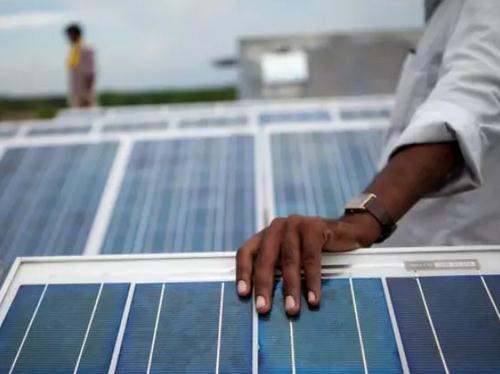The following are the same as the "

The growing price advantage of renewable energy prices means that India and China's emissions may be lower than expected. Source: Prashanth Vishwanathan / Greenpeace
A new study shows that even if the United States withdraws from the Paris Agreement, if India and China plan to exceed the "Paris agreement" in the emission reduction targets, will ensure that the global climate action smoothly.
China's coal consumption continues to decline, India's carbon emissions to 2030 will also be reduced by 2 billion-300 million tons. According to a study by the Climate Action Tracking Organization (CAT), taking into account the important role played by China and India in climate action, even if the Trump cabinet climate policy "reverses", it is unlikely that the global emissions reductions will Tremendous influence. CAT was formed by two climate non-profit organizations and a sustainable energy services and innovation company (Ecofys), a climate analysis organization and a new climate institute.
"If there is no other aspect to make up and hedge, the Trump cabinet's" anti-water "behavior on climate policy will make the US carbon emissions end," said Nicholas Hornner of the New Climate Institute in a statement. Down the trend into the platform period.
Emerging climate leaders debut
China's coal consumption has declined for three consecutive years (2013-2016), is expected to decline will continue. India in the "National Energy Plan" that the abolition of the planned construction of coal-fired power plants. According to the Climate Action Tracking organization analysis, if India can strictly implement the recently released action plan, the next decade will achieve a significant decline in carbon emissions.
"Five years ago, for coal and power plants in China and India, coal-fired power plants were the key to meeting their energy needs, and it was harder to stop or even reduce coal consumption," said Bill Hale, a climate analysis organization. However, many recent studies have shown that they are now able to cope with such problems.
Climate analysis said that China and India in the climate action achieved positive results, will make up Trump climate policy "anti-water" adverse effects. If Trump so wish, then by 2030 the US carbon emissions will be increased by about 400 million tons of the original plan.
According to the Climate Action Plan launched by the Obama administration in 2013, the United States expects to make carbon emissions to 2025 by vigorously pursuing clean energy, improving energy efficiency, improving motor vehicle fuel standards and implementing Clean Electricity Year to reduce the 26% -28%. According to the Washington Times, most of the plan's policies have ceased.
In the Indian energy revolution or will turn the tide
Climate action tracking organization analysis said that China and India will make up for the US climate policy in the "anti-water." In the Paris Agreement, China promised that carbon dioxide emissions peaked around 2030, increasing nonfiatic energy to 20% of energy consumption. India also pledged to raise the proportion of non-fossil fuels to at least 40% by 2030. Analysis, said China and India, the transformation and upgrading of energy structure, especially renewable energy development, will greatly improve the two countries in the climate change action in the leading position.
Ecofys Yvonna Deng said that the world's energy market in the past decade, the transformation and upgrading, wind energy, solar energy and other renewable energy prices significantly reduced, the price advantage has become increasingly prominent, its installed capacity is also much higher than the coal-fired power plant.
India last year announced the energy plan, made it clear that by 2027, the coal-fired power generation capacity increased from 230GW to 50GW. As the world's third largest carbon emitter, India plans to 2027 years ago, the proportion of non-fossil energy power generation increased to more than half, far more than the "Paris Agreement" commitment.
As the world's largest coal consumer and the largest greenhouse gas emissions, China's coal consumption has been down for three consecutive years. "Whether the decline in the past three years is a short stagnation or whether China has reached its peak in carbon emissions is still hard to say," said Yvonne Deng, the Washington Times. "If the latter is assumed, it will be reduced at the current rate , Then by 2030 carbon emissions will be lower than our last year, the value of 1 billion to 20 million tons.
CAT analysis said China is accelerating the reduction and reduction of greenhouse gas emissions, although there is still a distance from the target, but the speed of action has gradually approached the level required to achieve long-term objectives of the Paris agreement.
Based on India's "National Energy Plan", CAT expects India's carbon emissions to decline significantly in the future, by 2030, 51% -53% below 2005 levels, far exceeding the expected objectives of the Paris Agreement.
















 RCCN WeChat QrCode
RCCN WeChat QrCode Mobile WebSite
Mobile WebSite